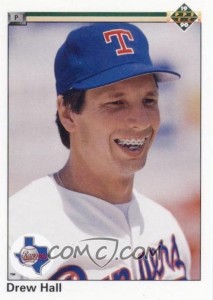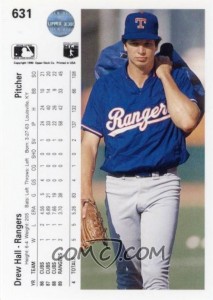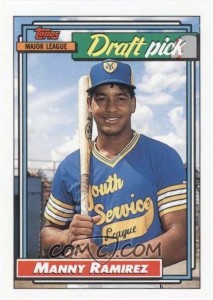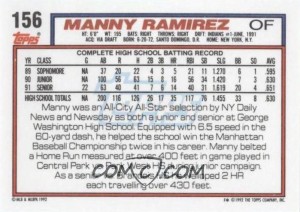The Card
With his goonish Neanderthal face, Drew is in the running for being one of the ugliest players of the last 25 years (Willie McGee, Zane Smith, Gary Gaetti, and Otis Nixon are other contenders). He has lots of goofy cards, but this one takes the cake. Upon discovering his braces, did they ask him to smile as big as he could and not look at the camera?
In the photo on the back, he looks like he wants to kill somebody. Did he just blow a game? Is he going to pull a machete out of that bag and come after the photographer?
After Upper Deck’s big splash in 1989, their 1990 design was minimalist and a little boring, and their cardstock seemed thinner. A small step backward for the upscale card company.
The Player
Drew was a Kentucky boy who played on the 1984 Olympic Team. Drafted by the Chicago Cubs in the 1st round (3rd pick) of the 1984 amateur draft, he was and still is the highest draft pick by a Major League Baseball team in the state of Kentucky.
In the mid-80’s, Drew was a decent pitcher in the minors for the Cubs, but in 1987, he was converted from a reliever to a starter. The best pitchers in the majors were almost always starters in the minors. When you become a reliever in the minors, it generally means that they’re giving up on you.
In the majors, Drew pitched a few innings out of the bullpen for three different teams without much success. Then back to the minors, when he started to figure things out in his late 20’s. But it was too late.
I became familiar with Drew when he joined the Expos for a short while in 1990. But he didn’t last long.
Hall returned to his alma mater, Morehead State University, in 2008 to serve as pitching coach. He now works with Kentucky-area baseball teams.



